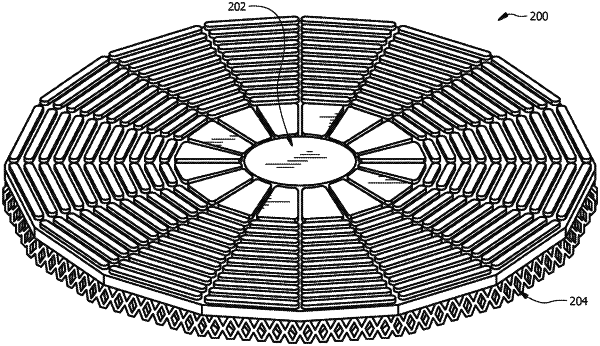| CPC B24B 37/26 (2013.01) [B24B 37/22 (2013.01); B24B 37/24 (2013.01); B33Y 10/00 (2014.12); B33Y 30/00 (2014.12); B33Y 80/00 (2014.12); C08L 75/04 (2013.01)] | 10 Claims |

|
1. A chemical mechanical polishing pad, comprising:
a surface portion comprising a first material, the surface portion comprising a plurality of grooves, wherein:
a first portion of the plurality of grooves are exposed grooves located at a surface of the chemical mechanical polishing pad; and
a second portion of the plurality of grooves are buried grooves embedded below the surface of the chemical mechanical polishing pad; wherein the exposed grooves and the buried grooves are offset vertically, and the buried grooves are located directly below the exposed grooves, such that the plurality of grooves at the surface remains constant, and that during use of the chemical mechanical polishing pad, when a top layer of the surface portion of the polishing pad is removed through conditioning and general wear, one or more of the buried grooves are exposed at the surface;
wherein the polishing pad has a volume of exposed grooves and an initial volume (V0) representing the volume of exposed grooves prior to use, and the volume of exposed grooves is maintained with less than an 80% variation from V0 during use.
|